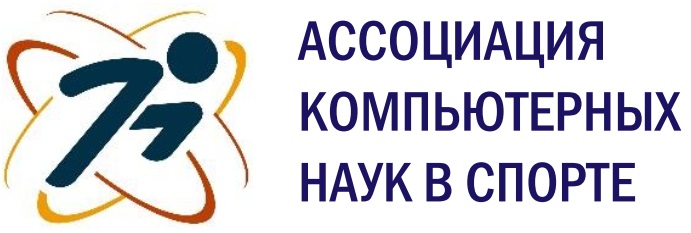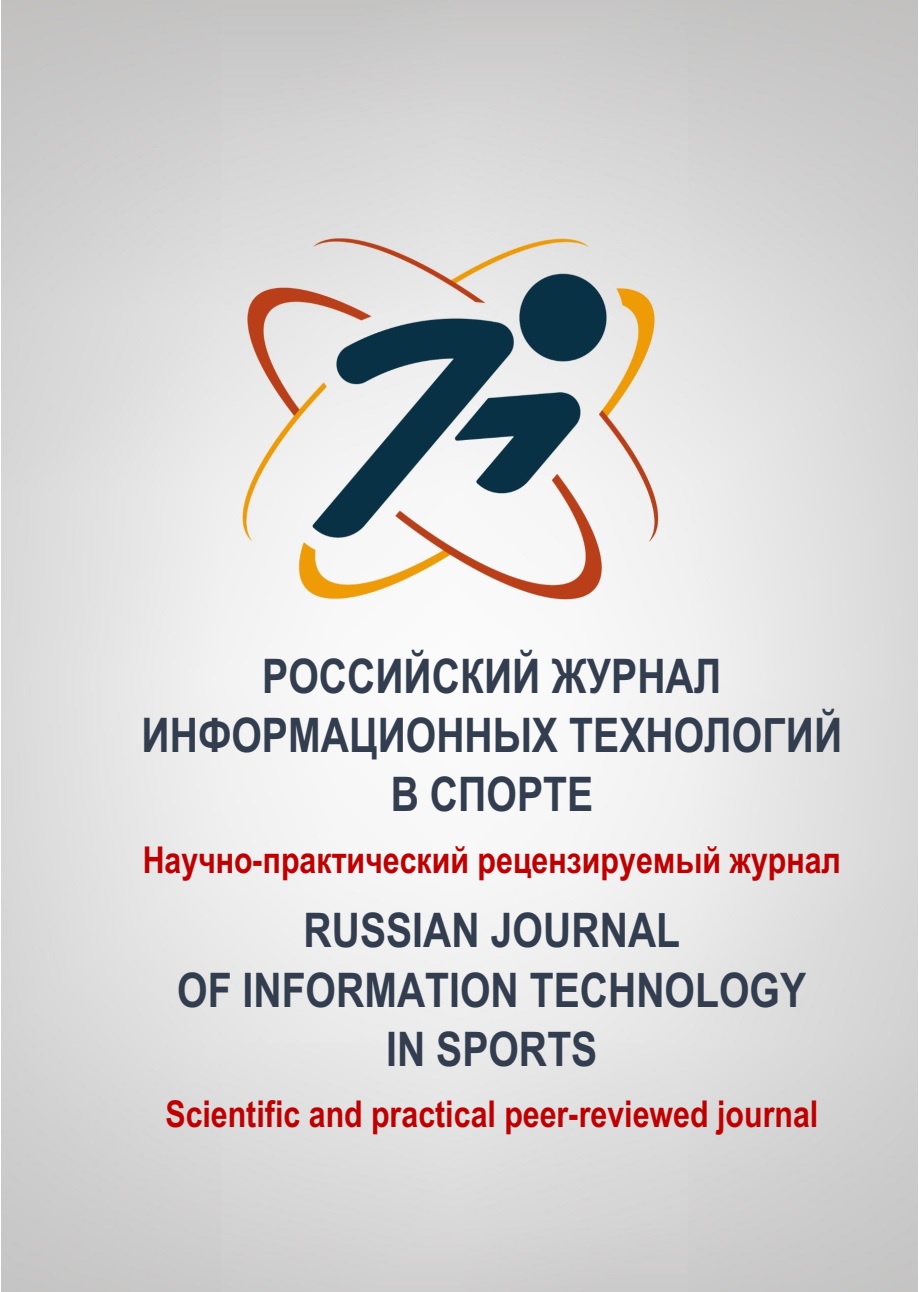employee from 01.01.2019 to 01.01.2025
Moscow, Russian Federation
VAK Russia 5.12.1
UDC 796.05
CSCSTI 77.00
CSCSTI 20.00
Russian Classification of Professions by Education 09.00.00
Russian Classification of Professions by Education 44.00.00
Russian Library and Bibliographic Classification 74
Russian Library and Bibliographic Classification 75
Russian Trade and Bibliographic Classification 5
BISAC COM072000 Computer Simulation
BISAC COM018000 Data Processing
BISAC COM089000 Data Visualization
BISAC COM079010 Human-Computer Interaction (HCI)
BISAC COM032000 Information Technology
BISAC COM012040 Programming / Games
BISAC JNF012010 Computers / Entertainment & Games
Relevance. Esports has evolved from an amateur hobby into a professional sport of global significance. The effectiveness of esports athletes is determined not only by their abilities but also by their capacity to analyze and adapt gaming behavior based on data, which shapes their model characteristics. Modeling, as a leading method of sports training, is aimed at reproducing the patterns of an athlete’s activity for its optimization. In esports, model characteristics are reflected in the format of a digital footprint (rating) directly within the digital environments of video games. The study of the systematization of rating algorithms in video games that are international esports disciplines, as well as of the model characteristics derived from them, is highly relevant. Methods.Analysis of scientific literature and specialized Internet resources (digital footprints in 13 video games), expert survey (n=26), and modeling. Results. The article presents a review of scientific literature devoted to model characteristics in esports, as well as an analysis of scoring systems in video games that are international esports disciplines. Based on interviews with experts and analysis of digital footprint databases in video games, model characteristics of esports athletes were compiled. A systematic analysis of the model characteristics of esports athletes, formed through a comprehensive study of digital footprints generated in the process of gameplay interaction in video games, is presented. Model characteristics of esports athletes of various qualification levels were studied and structured across 13 video games (Dota 2, CS2, League of Legends, Valorant, Standoff 2, Warface, World of Tanks (Steel Hunter), World of Tanks (7x7 Esports), Mobile Legends: Bang Bang, Apex Legends, Fortnite, Rocket League, Tekken 8, FC 24 (sports simulator)) for each stage of sports training. Conclusion. The model characteristics of esports athletes based on digital footprints (ratings) in video games serve as a reference point for modeling training loads at each stage of sports training. The results of this study can become the foundation for sports selection as an important element of athletic preparation.
sport, model characteristics, esports, video games, sports training, digital footprints, in-game rating
1. Skarzhinskaya E.N., Beresneva V.A. History of esports in the world and Russia: periodization. Homo Cyberus, 2025, no. 1-2(18-19). EDN: https://elibrary.ru/juhtlq
2. Grebenkov V.S., Zalilov M.A. Model characteristics of The International 2021 participants. *Computer Sports: Problems and Development Prospects: Materials of the All-Russian Scientific and Practical Conference, Moscow, December 02, 2021*. Moscow: RGUFKSMiT, 2021, pp. 29-34. EDN: https://elibrary.ru/higzyx
3. Shchepotyev A.M. Theoretical foundations for the development of model characteristics of esports athletes. Applied Aspects of Esports: Materials of the I Interregional Conference, Moscow, February 22, 2019. Moscow: RGUFKSMiT, 2019, pp. 64-67. EDN: https://elibrary.ru/mcbgfq
4. Skarzhinsky N.S., 2. Grebenkov V.S., Martynenko I.V. Model characteristics of esports athletes in the "Battle Arena" discipline (on the example of Dota2). Physical Culture: Education, Training, 2020, no. 5, p. 31. EDN: https://elibrary.ru/kopztg
5. Arzhakov D.O., Burmistrov D.S. Comparative analysis of in-game performance indicators in battle arena and tactical 3D combat. *Computer Sports (Esports): Problems and Development Prospects: Materials of the All-Russian Scientific and Practical Conference, Moscow, December 08, 2022*. Moscow: RUS "SCOLIPE", 2022, pp. 16-19. EDN: https://elibrary.ru/szdtum
6. Ermakov A.V., Skarzhinskaya E.N. Big data analysis as a tool for assessing the professionalization of computer sports. Theory and Practice of Physical Culture, 2023, no. 4, pp. 15-17. EDN: https://elibrary.ru/ekwdzm
7. Novoselov M.A., Zalilov M.A., Skarzhinsky N.S. Esports game Counter-Strike: Global Offensive as a subject of scientific research. Physical Culture: Education, Training, 2019, no. 5, p. 46. EDN: https://elibrary.ru/trrtkq
8. Skarzhinskaya E.N. Methodological approaches to the development of the federal standard of sports training for the sport "computer sports". Computer Sports (Esports): Status and Development Prospects: Interregional Scientific and Practical Conference, Moscow, December 10, 2020. Moscow: SCOLIPE, 2020, pp. 161-166. EDN: https://elibrary.ru/https://www.elibrary.ru/jaukgs
9. Mendoza Torrico G., Bonilla I., Chamarro A., Jimenez M. The defining characteristics of esports players. A systematic review of the samples used in esports research. Aloma Revista de Psicologia Ciències de l’Educació i de l’Esport, 2023, vol. 41, no. 1, pp. 111-120. DOI: https://doi.org/10.51698/aloma.2023.41.1.111-120
10. Bahrololloomi F., Sauer S., Klonowski F., Horst R., Dörner R. A Machine Learning based Analysis of e-Sports Player Performances in League of Legends for Winning Prediction based on Player Roles and Performances. Proceedings of the 14th International Conference on Agents and Artificial Intelligence, 2022, pp. 68-76. DOI: https://doi.org/10.5220/0010895900003124
11. Urbaniak K., Wątróbski J., Salabun W. Identification of Players Ranking in E-Sport. Applied Sciences, 2020, vol. 10, no. 19, 6768. DOI: https://doi.org/10.3390/app10196768












